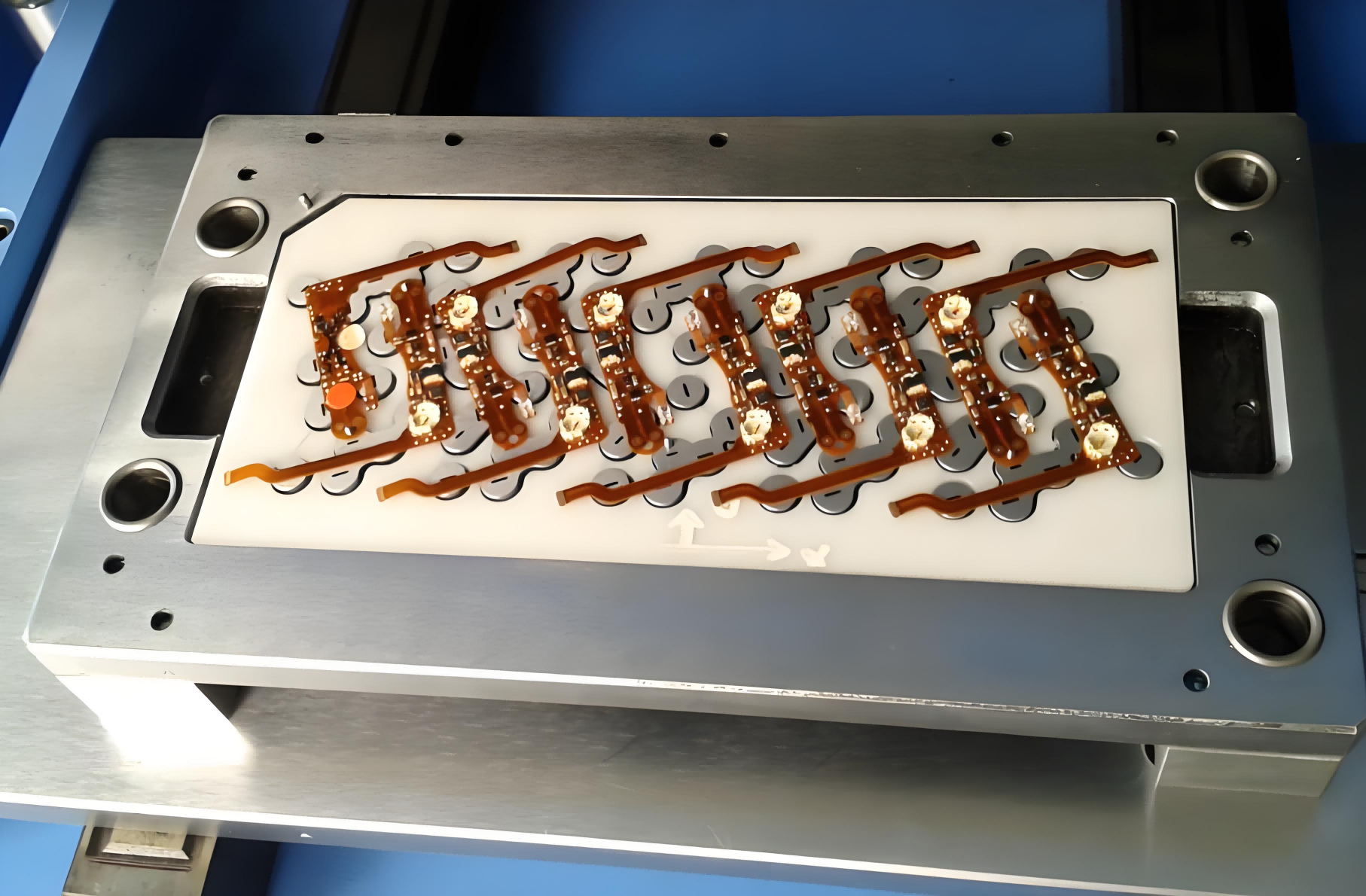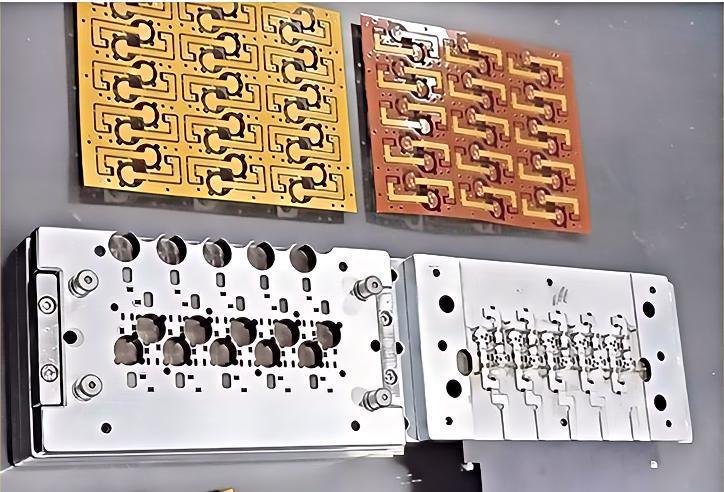Search
Demystifying the Reusability of FPC Molds: A Deep Dive
- Jan 06,2025
-
Share
In the highly intricate and perpetually evolving realm of Flexible Printed Circuit (FPC) manufacturing, the question regarding the reusability of FPC molds – and if so, precisely how many times – is a topic that commands our undivided attention. Molds are not only a significant financial investment for any FPC production facility but also a crucial determinant of the product quality, FPC performance in terms of signal integrity and flexibility, as well as production efficiency. To comprehensively understand this aspect, it is essential that we acquaint ourselves with the industry standards and norms that govern FPC molds.

When it comes to design, there are stringent guidelines in place. In the domain of mold structure design, diverse techniques are deployed based on specific requirements. For punching operations, such as creating micro-vias and precise cutouts on the FPC substrate to mount components like microcontrollers, connectors, or surface mount devices (SMDs), the choice between a blanking type and a punch-through type structure is of utmost importance. Generally, for punching operations involving cover films, thermosetting adhesive films, electroplated lines, and reinforcements like polyimide (PI) and FR4, the blanking type is commonly employed as it ensures punching precision and material stability, which are vital for safeguarding the integrity of the FPC circuitry and preventing short circuits.
Conversely, for FPCs with deformable outlines and mechanical holes, the punch-through type is favored to better manage deformation. Meanwhile, the choice of mold steel adheres to international best practices. Typically, premium mold-specific steels like Japan's SKD61 and SKD11 are selected, renowned for their high hardness, excellent hardenability, and minimal wire-cutting stress, laying a solid foundation for mold durability and the consistent production of high-quality FPCs with reliable electrical performance.
Moreover, the layout of mold locating pins is a meticulously considered aspect. These pins, whose function is to accurately position the FPC to be punched, should be distributed as close to the periphery of the product as possible. Additionally, particular attention must be paid to areas where the product demands stringent tolerances, such as regions with tight finger and center distance tolerances, where the locating pins should be placed in close proximity to guarantee punching precision within a narrow tolerance range, conforming to industry standards like the ±0.05mm to ±0.1mm dimensional tolerance requirements for outer dimensions (for different sizes and application scenarios, tolerance requirements may vary).
During the processing stage, a series of elaborate standards are likewise followed. The quality of wire cutting is of the utmost significance, and it is conventionally stipulated that the slow wire-cutting technique be utilized. This is because the quality of wire cutting directly impacts the performance and lifespan of the mold, hinging greatly on the grade of the machine and the proficiency of the operator. The mold assembly process, which occurs in the latter part of the manufacturing sequence, is equally critical. It demands strict adherence to established procedures to ensure the precision and stability of the final mold assembly. Also, heat treatment requirements play a vital role, with the male and female molds typically having a temperature difference of 8 - 10 degrees, facilitating subsequent mold repair operations and helping to maintain the mold's integrity over multiple uses.
Now, let's dissect the reusability of different types of molds:
1.Punching Molds: The Resilient Workhorses
Punching molds are the go-to tools for creating those essential holes and cutouts on the FPC substrate. Picture a high-volume production line churning out FPCs for the latest generation of smartphones, where hundreds of micro-vias might be needed for component interconnection. These molds, often fabricated from a special alloy like D2 tool steel, are engineered to endure significant stress. In a typical day, a punching mold might be tasked with executing thousands of punching operations. Thanks to their hardened construction, they can uphold precision over an extended duration.
For example, in a well-run factory manufacturing FPCs for consumer electronics, a punching mold can endure 50,000 to 100,000 punching cycles before the holes it creates begin to exhibit even the slightest deviation in diameter or position. This durability is partly attributable to the relatively straightforward mechanical nature of the punching process. However, it's not merely a matter of brute force. Regular maintenance, such as purging the minute metal shavings (known as swarf) that accumulate during punching and scrutinizing the punch and die surfaces for signs of wear, is indispensable. A minuscule nick or dull spot on the punch can promptly lead to imperfect holes and potential complications further down the line in FPC assembly. Industry standards also mandate that after a certain number of cycles, detailed inspections using precision measuring tools like micrometers and optical comparators be carried out to ensure the mold remains within tolerance.
2.Etching Molds: Precision Under Pressure
Etching molds are where the real magic – and complexity – unfolds when it comes to sculpting the intricate circuitry patterns on FPCs. Consider an FPC destined for a high-definition VR headset, where the etching mold acts as a stencil, protecting certain areas of the copper-clad laminate while permitting the etchant to act on the remainder. These molds are typically crafted from materials like nickel or a nickel alloy, selected for their resistance to the corrosive chemicals involved in etching.
However, here lies the snag: each time the mold is used, it is exposed to the etchant, which gradually erodes its surface. In a research and development laboratory focused on pushing the boundaries of FPC circuitry, an etching mold might be utilized 200 to 300 times in a year, depending on the complexity of the circuits. For simpler FPC designs, with wider line widths and more forgiving tolerances, a well-maintained etching mold could potentially withstand 500 uses. Nevertheless, to achieve these numbers, a stringent post-etching cleaning regimen is obligatory. Employing specialized solvents to eliminate any residual etchant and meticulously examining the mold under high magnification for signs of pitting or degradation are steps that cannot be overlooked. Without such meticulous attention, the precision of the circuitry etched onto the FPC would rapidly deteriorate, leading to short circuits or impedance mismatches. Additionally, the etching process must comply with industry safety and environmental standards, ensuring proper handling and disposal of etchants to prevent pollution.
3.Bending Molds: Flexibility Champions
Bending molds are what endow FPCs with their capacity to conform to the confined spaces and curved surfaces in modern electronics. Think of a fitness tracker or a smartwatch, where the FPC needs to wind its way around the device's interior. These molds, often fabricated from a combination of heat-treated steel and a wear-resistant coating like titanium nitride, can withstand an astonishing number of bending operations. In a factory dedicated to wearable electronics, a single bending mold might be employed tens of thousands of times throughout its lifespan.
For example, if a particular model of smartwatch has a production run of a million units and each FPC requires two bends, a reliable bending mold could handle the task without incident. But it's not all smooth sailing. The key to such longevity lies in ensuring the mold is consistently and properly lubricated. The appropriate lubricant serves to reduce friction, preventing the FPC from adhering to the mold and triggering premature wear. Additionally, routine checks for any warping or distortion of the mold are essential, as even a slight misalignment can result in FPCs that do not bend correctly and could potentially malfunction in the field. Industry standards for bending molds also encompass aspects such as the maximum allowable bending radius to preclude damage to the FPC, which is typically specified based on the FPC's material and thickness.
4.Lamination Molds: Building Layered Strength
Lamination molds are the unsung heroes behind the assembly of multi-layer FPCs. In an industrial application like an automotive engine control unit, where multiple layers of substrates, conductive foils, and insulating materials need to be fused together under high heat and pressure, the lamination mold is indispensable. These molds are usually fabricated from materials possessing excellent heat resistance and mechanical strength, such as Inconel alloys.
In a production facility supplying FPCs for the automotive sector, a lamination mold can be reused for hundreds of production batches. Provided it is stored appropriately – away from extreme temperatures and humidity – and inspected periodically for signs of cracking or deformation, it can reliably produce high-quality multi-layer FPCs for years. The lamination process is delicate, and any defect in the mold can precipitate delamination issues, which in turn can cause signal leakage or complete failure of the FPC in a high-stress automotive environment. To meet industry quality control standards, lamination molds are often subjected to pressure and temperature uniformity tests before and during production runs to ensure consistent results.
In conclusion, the reusability of FPC molds is a complex equation that balances mold type, manufacturing demands, and maintenance efforts, all while adhering to stringent industry standards and norms. Comprehending these nuances is essential for any FPC manufacturer aiming to optimize costs and quality.

At Shenzhen Huaruixin Electronics Co., Ltd., we stand at the vanguard of FPC design, production, and sales. Our team of experts possesses hands-on experience dealing with every facet of FPC molds and manufacturing. We have mastered the intricacies of maximizing mold reusability, from selecting the appropriate materials for each mold type to implementing state-of-the-art maintenance procedures that align with industry best practices. Whether you're a long-standing partner or a new entrant to the FPC arena, we welcome you to reach out. Have questions about mold durability, need advice on enhancing your FPC production process, or simply wish to explore the latest trends in the industry? We're here to engage in that conversation and help you elevate your FPC capabilities to the next level. Let's collaborate and drive innovation forward in the FPC world.

Let’s talk! We’ll provide the perfect solution for you!
-
 Huaruixin Electronics mainly produces printed circuit boards as the core business, to provide customers with one-stop solutions for FPC/PCB production, components sourcing and Assembly.
Huaruixin Electronics mainly produces printed circuit boards as the core business, to provide customers with one-stop solutions for FPC/PCB production, components sourcing and Assembly. - WHAT WE DO — PCB Design Solutions — Flex PCB Production — Components Sourcing — FPC&PCB Assembly
- PRODUCTS — Single Sided Flexible Circuits — Double Sided Flexible Circuits — Multilayer Flexible Cirucits — Rigid-Flex Circuits — FPC Assembly — PCB Assembly
- CAPABILITY — FPC Capability — Rigid-Flex Capability — PCB Capability — Assembly Capability
- Copyright © 2024 Shenzhen Huaruixin Electronics Co., Ltd. All Rights Reserved.
- Design By BONTOP


